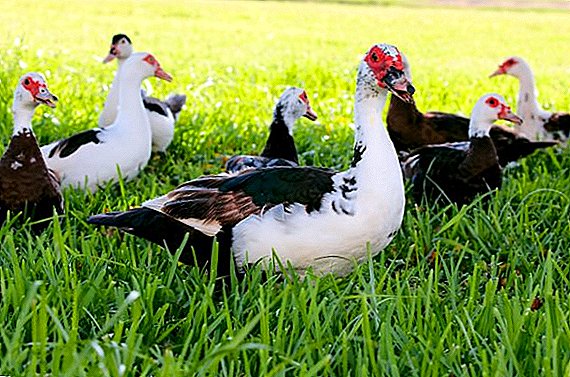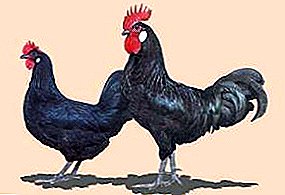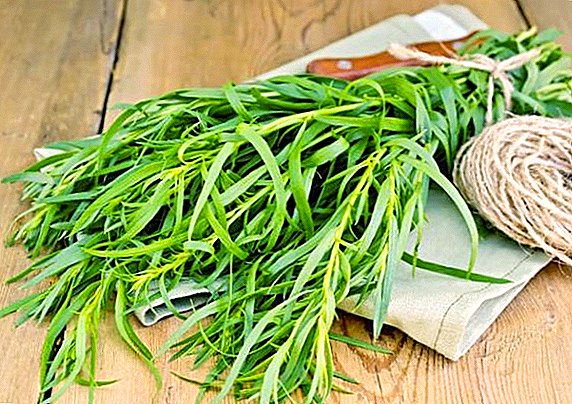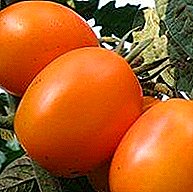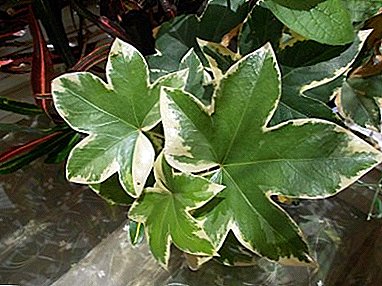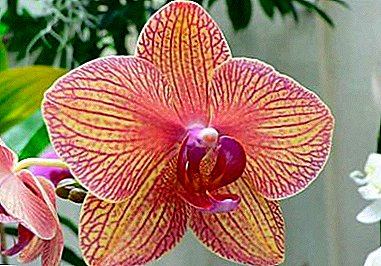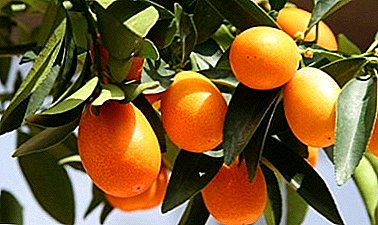
Kinkan what is it? Fortunella (kinkan) - citrus plant, giving edible fruits (kumquat).
Refers to family rutovyh. Fortunella imported from southern China.
Plant description
Citrus Fortunella has oblong pointed leaves and smooth green shoots. The plant blooms in spring and summer.
Flowers small light pink. In the autumn, closer to winter, Fortunella gives fruit, which are called kumquat. Literally from Chinese kumquat means "golden orange".
Fruit have a pleasant aroma. They are eaten both raw and processed. The pelt is also edible and has a sweet taste. The flesh is sour. More often from kumquat prepare jams, preserves, marmalade.
Fruits are rich in vitamins and minerals (vitamin C, zinc, fosfr, calcium). "Golden Orange" contains essential oils, which are used as a therapeutic agent and in aromatherapy.
These substances strengthen the immune system and can help the body cope with infections, fungal infections and bacteria.
Fortunella is not capable of rapid growth. After a few years, the tree grows only a meter or a little more.
Photo
Kinkan: photos of the plant and its fruits.



Home care
Kinkan: care and cultivation at home.
Care after purchase
After acquiring the plant it is placed in a room with good illumination. It is advisable to choose a window facing south.
Watering
Water the kinkan regularly.: in the spring - in one day, and in the summer - every day. Watering intense. In winter, Fortunella is watered much less frequently and more moderately. One or two times a week is enough.
It is better to use warm water, which has already settled.
Bloom
Fortunella blooms usually in July and August during the week. After the kinkan blooms for the first time, the tree sometimes blooms a second time. Pollination of flowers cross, but there may be self-pollination.
Crown formation
In order to form a crown and speed up the fruiting process, it is necessary trim and pinch shoots plants.
Priming
For fortunella, a mixture of sod, soil, humus and sand is commonly used. Components are taken in the ratio: 2 parts of sod, one part of the soil and one part of the humus, half the sand.
A lighter mixture is more suitable for the young kinkan, and weighted soil is recommended for mature fruit-bearing trees. In this case, the turf or ordinary soil is doubled.
Planting, transplanting
 Replant kinkan preferably in autumn. About once every two years. Transplantation is carried out by transfer from an old pot to a larger one.
Replant kinkan preferably in autumn. About once every two years. Transplantation is carried out by transfer from an old pot to a larger one.
The process must be neat, you should try to injure the root system as little as possible, otherwise the tree may get sick.
Do not forget about drainage. Sand is poured on claydite (four centimeters). And the soil is laid on top. The top old layer of earth should be tried to be replaced with a new one.
The gaps between the earth lump with the roots and the walls of the pot are filled with fresh mixture with a slight compaction.
Breeding
Propagated kinkan cuttings, grafting or layering.
More often at home this type of plant is propagated cuttings. This process can be carried out at any time of the year, but still the most favorable time for grafting is April.
The handle is treated with a solution containing a growth promoter. For cuttings are taken lignified shoots, which are divided into cuttings up to eight centimeters. On the cuttings should be at least three buds. It is better to powder the lower part with charcoal, and the upper, sheet part is removed by a third.
Rooted in a pot, covered with a conventional transparent glass jar. Drainage is poured into the pot, then the moss is laid, the soil goes on top. On it you can pour a little river sand (about 3 cm).
In small pots, Kinkan cuttings are planted to a depth of 2 cm and placed in a well-lit warm place. Watered cuttings should be warm water. Under all conditions, the roots can appear in two weeks.
Next, the plant sits in larger pots.
 During the reproduction of the kinkan by layering An escape by age about one year is selected. The length should be about 19 cm. In the cortex, in a place above the base of 9-10 cm, a pair of cuts are made, having a distance of 1 cm. Further, the formed ring is removed. Foliage, which is located above or below, cut off.
During the reproduction of the kinkan by layering An escape by age about one year is selected. The length should be about 19 cm. In the cortex, in a place above the base of 9-10 cm, a pair of cuts are made, having a distance of 1 cm. Further, the formed ring is removed. Foliage, which is located above or below, cut off.
Then a plastic container is taken (about eight centimeters in diameter), cut along. On the resulting parts of the bottom of the container in the central part, a pair of semicircles are cut corresponding to the thickness of the shoot. Next, the container is attached to the shoot so that the cut turned out in the central part of the container.
Both halves are fastened with wire and filled with a mixture of peat and sand, which should be regularly irrigated. Roots appear above the incision during the month. After a couple of months, the shoot is trimmed just below the bottom of the tank. A young plant with the same soil should be transplanted into a pot. Next you need to moisten the soil well.
Reproduction by grafting The procedure is carried out in a period of intensive development of shoots. Graft fortunella is more durable compared to the kinkan grown from cuttings and cuttings.
Growing at home
Kinkan (kumquat) prefers warm air of about 30 degrees, but in winter it is more suitable for temperatures up to 15 degrees. In the summer, Fortunella can be carried out to fresh open air. Overheating and hypothermia this type of plant does not like.
Kinkan more suitable moist airtherefore, the plant should be sprayed regularly, and in winter, small tanks with water should be placed nearby to humidify the air.
Temperature
During flowering and fruit formation The best temperature for a kinkan is 16-18 degrees.
Benefit
Kinkan has a diverse effect on the human body. It stimulates, deodorizes, and also has anti-inflammatory action. The fruits themselves contain many useful substances.
Scientific name
Kinkan is often called Japanese or Fortunella. "Fortunellajaponica". Fortunella Oval has the name "Fortunellamargarita".
Diseases and pests
 Major pestsaffecting the kinkan are citrus mites and scale insects. On the products of excretion of pests sometimes soot fungus is formed.
Major pestsaffecting the kinkan are citrus mites and scale insects. On the products of excretion of pests sometimes soot fungus is formed.
If the air is too dry, leaves may fall. When Fortunella overflows, the root system rot, causing the plant to die.
Fortunella is a beautiful plant in the form of a tree, bringing tasty and healthy fruits that are used both in raw and processed form. Fortunella requires care and compliance with certain conditions.
The tree not only serves as an adornment for houses and premises, but also possesses properties that are beneficial to the human body.
And here is a video about the citrus plant Fortunella.



